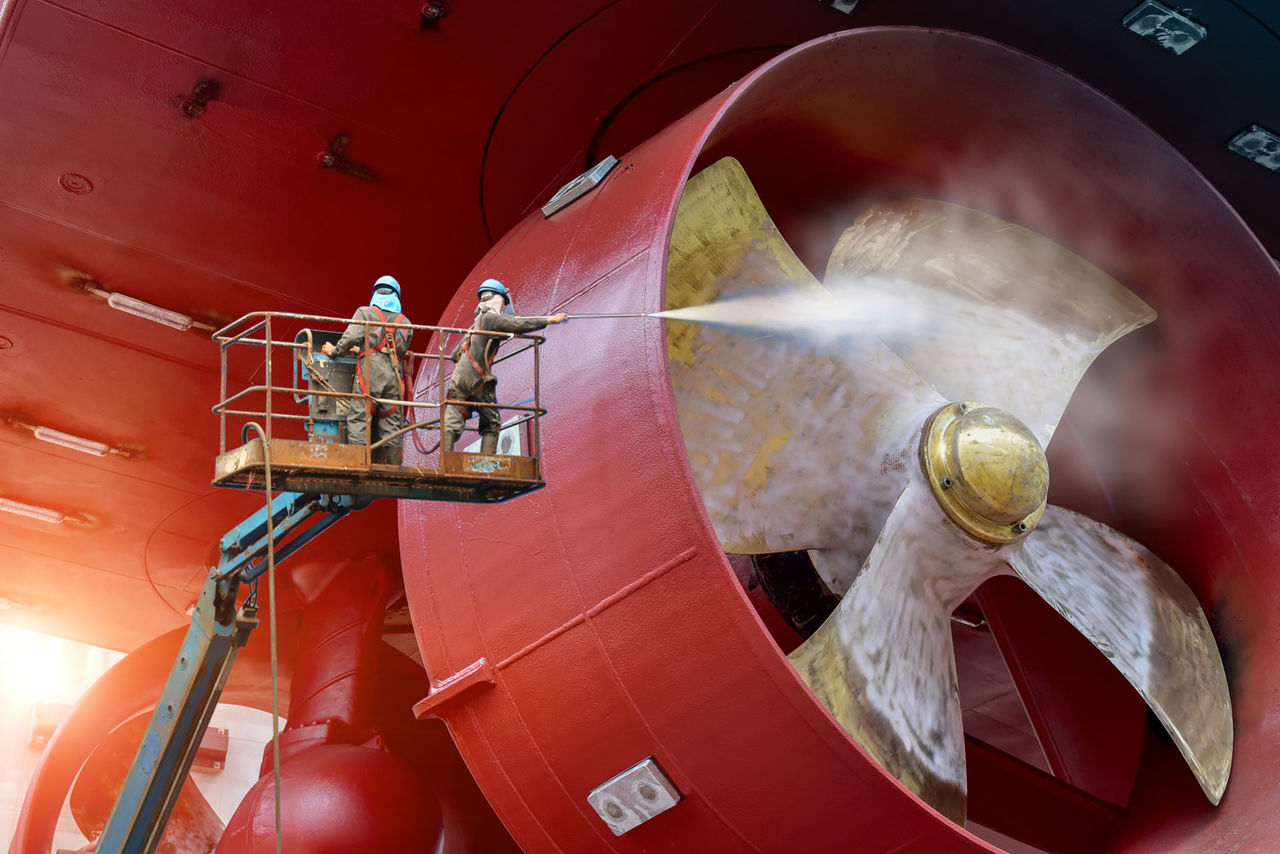In August 2009, the German-owned container ship ‘Hansa Stavanger’ and its crew were finally released by Somalian pirates following a harrowing 121-day hostage crisis. In the days following its release, though, the ship barely limped back to port in Mombasa, Kenya, at a speed rarely exceeding five knots, despite its engines being healthy. As the ship arrived at the port, a school of sharks was observed following the slow-moving vessel.
Why so slow and why the sharks? Because when a ship slows or stops, the build-up of algae begins on the submerged sections of the hull and on the propeller. A supply of delicious algae attracts plankton, molluscs and other shellfish, such as barnacles and mussels. In turn, this attracts small fish, who attract larger fish, and eventually sharks. An entire marine ecosystem can quickly form around a becalmed or slow-moving ship.

A foul waste
The befouling of the ship’s hull and propeller with molluscs is one of the largest contributors to a ship’s fuel inefficiency and that’s what made the ‘Hansa Stavanger’ so slow, even with the engines running at full power, says Oliver Heinrich, senior manager in digital customer solutions at Accelleron. “The first- and second-biggest factors in fuel efficiency are the route taken and the weather conditions for the voyage. But following those, the cleanliness of the hull and propeller is the biggest factor.” The Hansa Stavanger was an extraordinary case, but all ships experience foulage and the lost propulsion efficiency it creates over time.
Lost propulsion efficiency and thus lower fuel efficiency is, of course, a serious business for every shipowner, especially those involved in international shipping, where the volumes of fuel wasted or saved are so large. Wasted fuel through propulsion inefficiency is expensive and unnecessary, of course. Reports state increased operational costs of up to 30% through foulage, accruing an estimated extra annual fuel bill in global shipping of $200 million USD.
And in recent months fuel efficiency – and its relationship with emissions – has been given extra urgency through the introduction of CII ratings for ships. A befouled ship has an increased likelihood of a worse CII rating, with the penalties that incurs. On the other hand, cleaning a mollusc-clogged ship becomes a relatively quick way to increase a ship’s rating. As a final consideration, a befouled ship is likely to be considerably heavier, which affects the weight it can carry, the ballasting required for operational stability, the speeds attainable and also, in turn, it creates more emissions.

Clean getaway
But cleaning a ship should ideally happen when a ship is just starting to become befouled, though, Oliver explains. “At earlier stages, the vessel can be cleaned while it’s still in the water. But the surface of barnacles and mussels hardens up like concrete over time, though, and if it reaches that stage, then the ship will need to be cleaned when it is dry-docked.” Choosing the exact point at which to perform underwater cleaning of the hull and propeller has been a difficult science, though. Sending down divers to inspect the hull periodically was historically one of the only ways to make the right judgement, but is as impractical as it sounds.
It’s with these factors in mind that Hull and propeller was introduced as a new module of Tekomar XPERT marine. The module is able to perform calculations that allow ship operators to understand the exact point at which a cleaning will provide the best return on investment, and whether that should be performed underwater or at the next dry dock.
It works algorithmically. Given a full set of measurable conditions provided from the ship’s sea trials, the engine and other readings, the module knows how efficiently the ship should be operating. “We’re able to measure the excess power that’s required to get the ship to a certain speed,” Oliver explains. The difference between that modelled efficiency and actual power readings provides an indication of the impact created by foulage.
Again, through modelling, the right point — where cleaning provides a valuable payoff — can be calculated. With historical data accrued over time, and by knowing elements such as fuel prices and the predicted speeds the vessel will be travelling, the system will also be able to provide a forecast of when the next clean will be optimum.
Bringing the information into Tekomar XPERT marine, alongside the additionally available modules for engine efficiency, emissions management and turbocharger performance in one suite, it gives ship owners and operators a single pane of glass for efficiency and maintenance decisions, across the vessel, or across whole fleets.
And most importantly, it works, and this has been confirmed by customers. Applying algorithms to shellfish turns out to be an enormously valuable idea.














